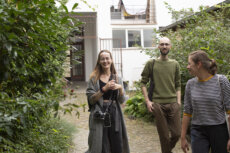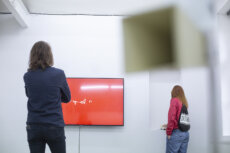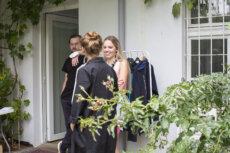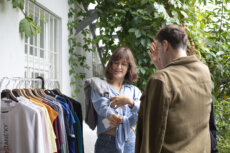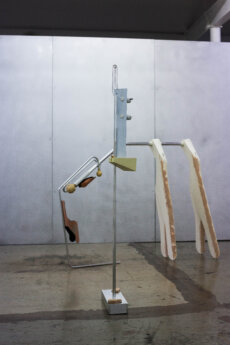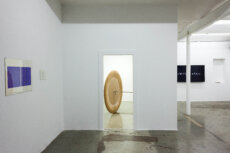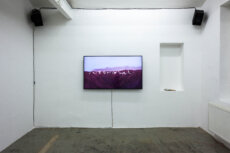May 2021
A group of scientists publishes a paper claiming that some photographs from Mars taken by NASA’s Curiosity rover contain evidence of organisms resembling mushrooms and lichens. The scientific community reacts with skepticism, urging the press not to spread the ‘news’ as the paper was published in a low-quality peer-review journal and some of the authors have dubious academic reputations. Still, the images circulate widely on social media, and it becomes hard to unsee Martian fungal biota under every more or less ‘organically’ shaped stone ln the photographs. Some images even feature structures occurring in the trails left behind by the rover moving in the Martian dust, which is said to provide evidence for the rapid growth of these supposedly organic forms.
November 2019
William Romoser, an entomologist from the Ohio University, claims that Mars is populated by insect-like creatures, based on his analysis of images taken by Viking and Phoenix landing modules and the rovers Pathfinder and Curiosity. He identifies structures resembling the wings of dragonflies, compound eyes or thin legs in the photographs. His speculative observation feeds the imagination of an alien biota hiding in plain sight, peeking from behind the rocks at the robotic intruders from the other world, playing a sort of schizophrenic “catch me if you can” game with the human observers on the other end of the wire.
July 1976
The orbital module of Viking 1 makes a routine flyby over Cydonia Valley, a place which is believed to once be a coastal area of an ancient Martian Ocean. Quite surprisingly, some of the pictures taken during the flyby display a humanoid face in the valley, resembling a sphinx or a similar sculptural work made by an unknown civilization. The appearance is dismissed as an optical trick, despite the fact that the face has been photographed by the probe on at least two independent occasions. Today, thanks to a host of other probes that directed their cameras on the valley over the following decades, it has been confirmed that the “Face on Mars” was just an instance of apophenia – an illusion of seeing a familiar pattern in random data.
February 1908
Alexander Bogdanov’s Red Star is published in St. Petersburg. It is a story about a Communist Martian society faced by a decision as to whether to colonize the Earth by introducing Communism into the complicated circumstances of the Blue Planet, ravaged by nationalist wars, oppression of the underprivileged and industrial capitalism. The novel is an exercise in “comparative planetology” – an analysis of the geological, biochemical and climate conditions of different celestial bodies aimed at explaining the evolution of their respective social orders. The key role in the divergent evolution of Martian society is attributed to the smaller size of the planet, its compact mainland, and the continuous development of large-scale infrastructural projects: the famous Martian canals first observed by Giovanni Schiaparelli in 1890s and popularized by Percival Lowell as evidence of a civilization surviving on an arid planet by an artificial alteration of its environment.
Coda
In her Placing Outer Space (2017), anthropologist Lisa Messeri highlights how Mars has always been an object of human ‘place-making’ activities, which turn an abstract, distant planet into a familiar place populated by cultural meanings. These activities have evidently changed over the past century. What started with grandiose narratives about sapient creatures ended in glimpses of invertebrates. After all, the most probable Martians will be lifeforms like extremophile bacteria. In such a case, we need less cultural projections of Earth on Mars, and more of those that bring the Red Planet onto our own. The red light of the Martian Communism carries a message about becoming Martian, emerging from the inhuman communalities of the inorganic and the organic, not from the social, economic and cultural forms. From this point of view, the future of our planet lies completely outside of the human, and as on the Red Planet, the task is to adapt and be patient.
Tomáš Kocka Jusko & Alex Selmeci artworks were commissioned with support from the Academy of Fine Arts in Prague.
Festival is free of charge. Please, reserve your tickets here.
